If this is your summer to buy a new swimsuit, lucky you. I don’t think the world of big bust swimwear has ever been bigger. You’ve got styles from retro to sporty to elegant and everything in between.
On the other hand, if this is your summer to buy a new swimsuit, poor you! Cup-sized swimsuits aren’t cheap, and most of us only buy them every 2-3 years or when our current suits wear out. That creates a lot of pressure on us to make the right choice before we tear off the tags and plunge into the pool! For me, it means agonizing over product descriptions and size charts . . . especially size charts.
I’ve been a different bra size for each of the past three summers. In 2013, I purchased a black Elomi Isis swim bra in 36GG, thinking I would wear it for years to come. However, by August of 2014, I fit the Panache Tallulah one-piece in 32G. This summer, I seem to be a solid 32FF, and there’s a lot of extra space in my Tallulah cups.
Thankfully, I don’t have to settle for cups that are too big this summer because several cup-sized swimsuit manufacturers are providing the Hourglassy writers with suits to review for the rest of this month! Leah, Mia, Patsy and I have spent the last few weeks agonizing over product descriptions and size charts in hopes of making it easier for you when you’re ready to shop. (Poor us, right? But seriously–we’ve felt extra pressure to choose the right style and size so that our reviews are based on the best possible fit.)
Before we get into specific brands, let’s consider the basic principles of bra fit and how they interact with cup-sized swimwear. For help on this subject, I attended Eveden’s cup-sized swimwear seminar at Curve in February and later emailed follow-up questions to an Eveden representative. The seminar was led by the world’s favorite (and best) bra fitter, Freddy Zappe.
Freddy of course emphasized that the three main rules of bra fit continue to apply to cup-sized swimwear:
- The band needs to be snug around your torso, anchored low (but not too low) on the back and parallel to the floor.
- The underwire should end behind your bust and not rest on any breast tissue.
- The center front should tack against your chest wall, separating your breast tissue.
Next, she explained that the biggest difference between bras and cup-sized swimwear is the amount of mechanical stretch. Everyday bras don’t have a lot of stretch. If they did, you’d get this look . . .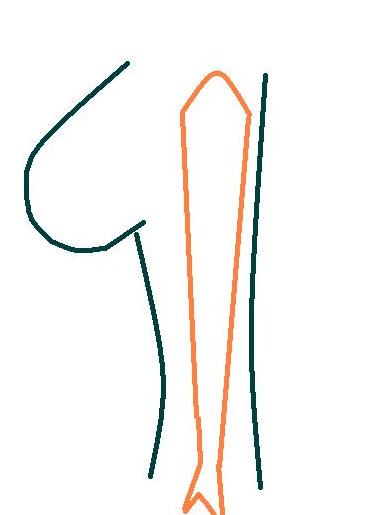
instead of this look.
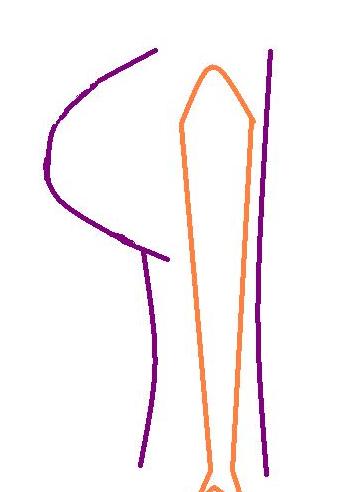
Because of all that stretch, there are times that you will want to go down a cup size in swim, but it all depends on the style. As the Eveden rep wrote to me later, “Unlined tops tends to have more mechanical stretch, both in lingerie and swim. These are the styles that you may need to size down in. Foam-lined cups have less give, so those tend to be truer to size.” In fact, Leah tends to size up in Freya swimwear cups, which the Eveden rep said is especially understandable with their half cups because “with less give and less coverage” some women may be “more comfortable going up a size.”
As with bras, different styles are going to work better on different sets of breasts. If the underwire perfectly frames your breast tissue but your boobs are pillowing, you should try a different style. If the underwire is fine but the cups are baggy at the top, also try a different style (Freddy recommended a demi). From the seminar brochure, here are the five basic styles that Eveden offers through its full-bust brands.
Of course, tankinis and one-pieces use variations of these shapes. We’ll be referring to these shapes as we write about all the brands that we review in the weeks ahead. In preparing for today’s post, I tried to create a chart showing which Eveden styles have foam or mesh linings and which have side stays, but it turns out there are multiple variations, so we’ll simply discuss these features as they come up in our reviews.
I also asked my Eveden contact which styles they most recommend for our G+ readers, and she answered that “moulded cups with straps (rather than a halter) work best for G+ cups. Cups with only mesh lining won’t give as much support or control and halter tops are often too heavy for women with G+ cups.”
Returning to the subject of stretch, I’ve often wondered–how much should a woman base her purchase decision on the expectation that a swimsuit will stretch out faster than a regular bra? For instance, although Mia normally wears a 32J, you’ll read in her upcoming posts that she likes to wear a 34 band in swimsuits to avoid any suggestion of back bulge. I, on the other hand, don’t want to risk losing any support from an already stretchy band that’s only going to get looser with time. I also wondered–if an F cup produces slight pillowing but fits everywhere else, is it okay to bet that the edge of the cup will eventually stretch out and eliminate the quadraboob? Here is the Eveden response:
Unlike a bra, you cannot conceal your swimsuit while you “break it in” so to speak. If a suit is giving someone excess bulge in the band, but is not supportive in the next size up, I would suggest trying a different style. Different styles work for different people. It’s also important to keep in mind that most women don’t wear their swimsuits nearly as often as any given bra in their drawer. So, though the bands on your suits will stretch a bit over time, we shouldn’t count on them to stretch the same way that our bras do.
Finally, you’ll be happy to hear that according to Freddy, swimwear fit doesn’t have to be as precise as bras. The key is to make sure you have support. We’ll be discussing what this means for each of us for the rest of the month–and we look forward to hearing what it means to you as well!
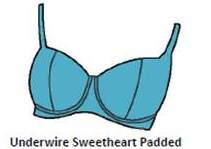
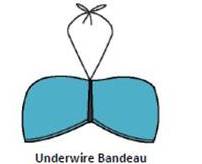
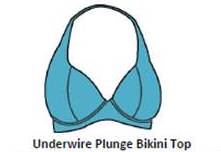
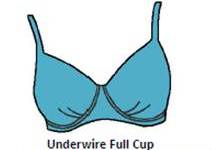
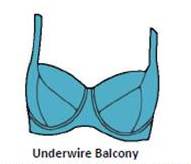
1 Comment on Busty and the Beach – Hourglassy’s June Swimsuit Series